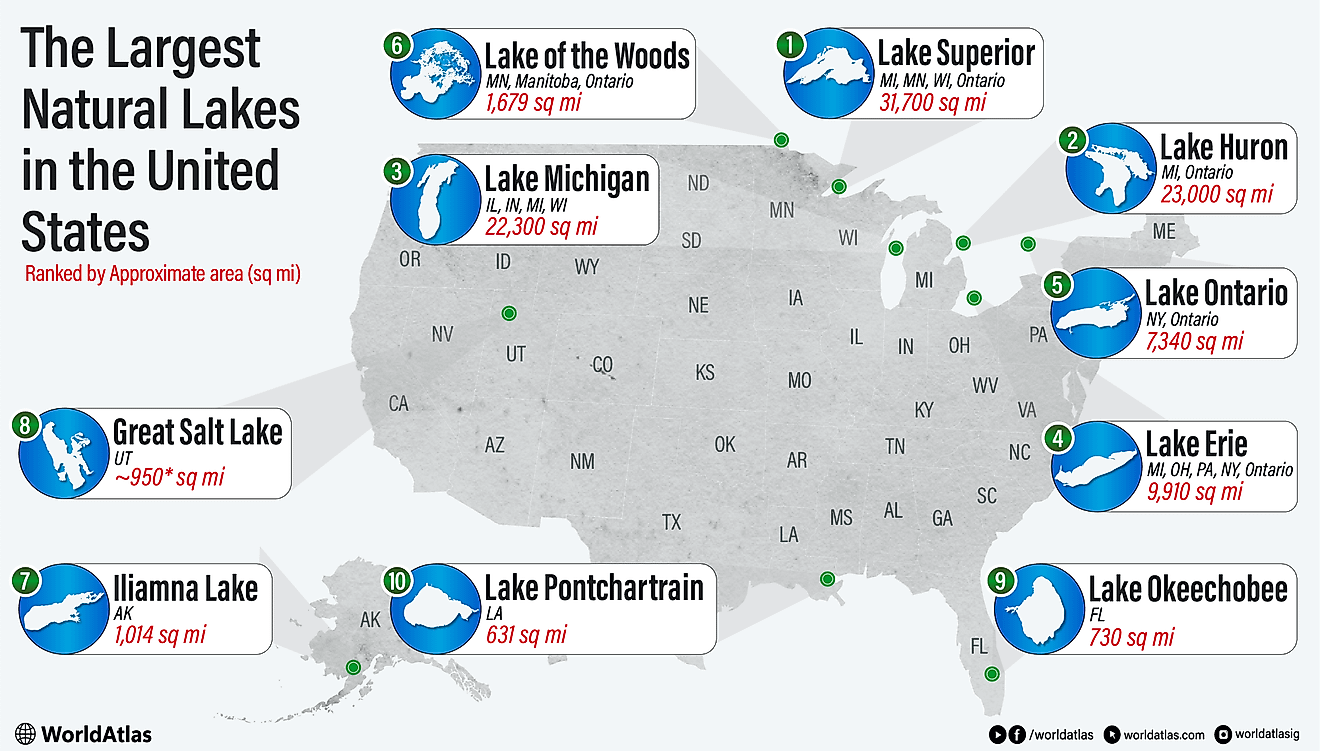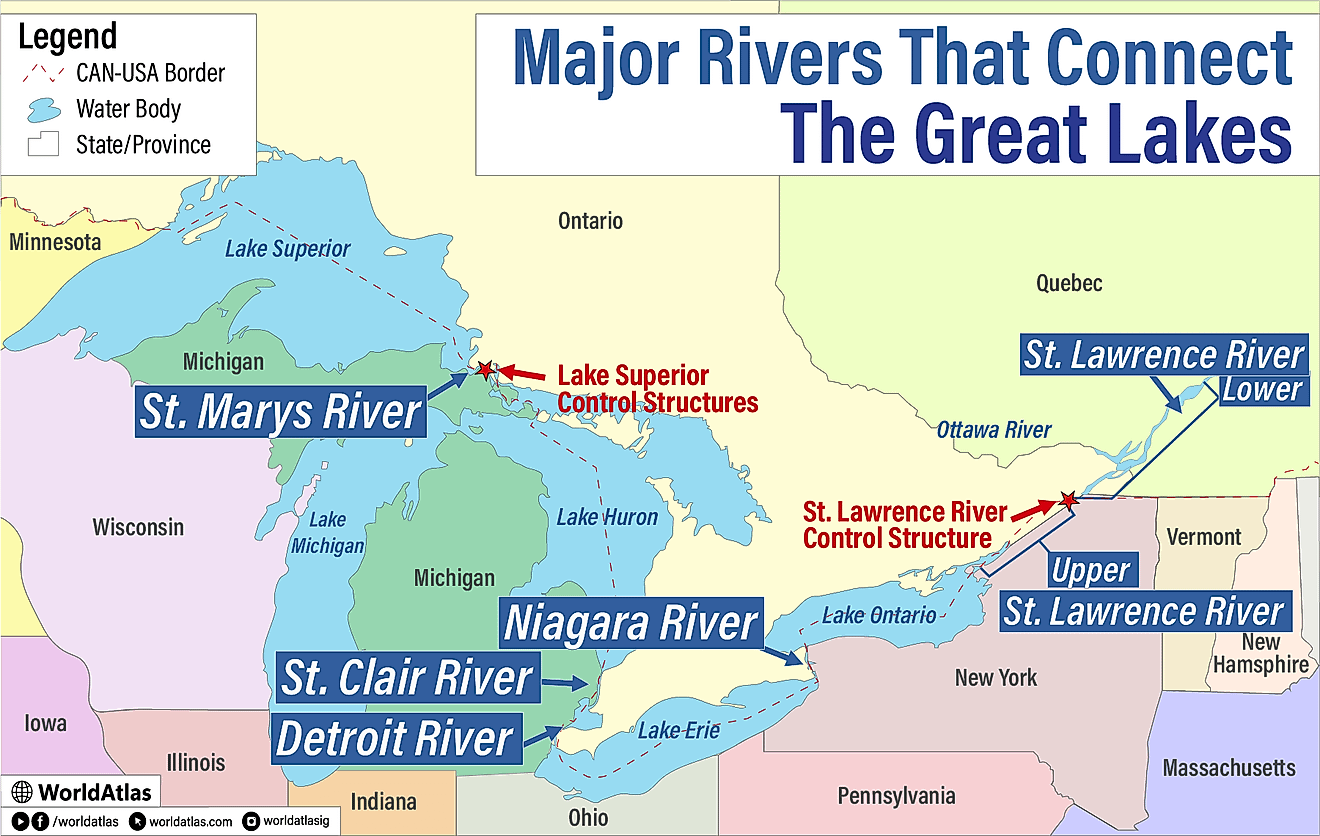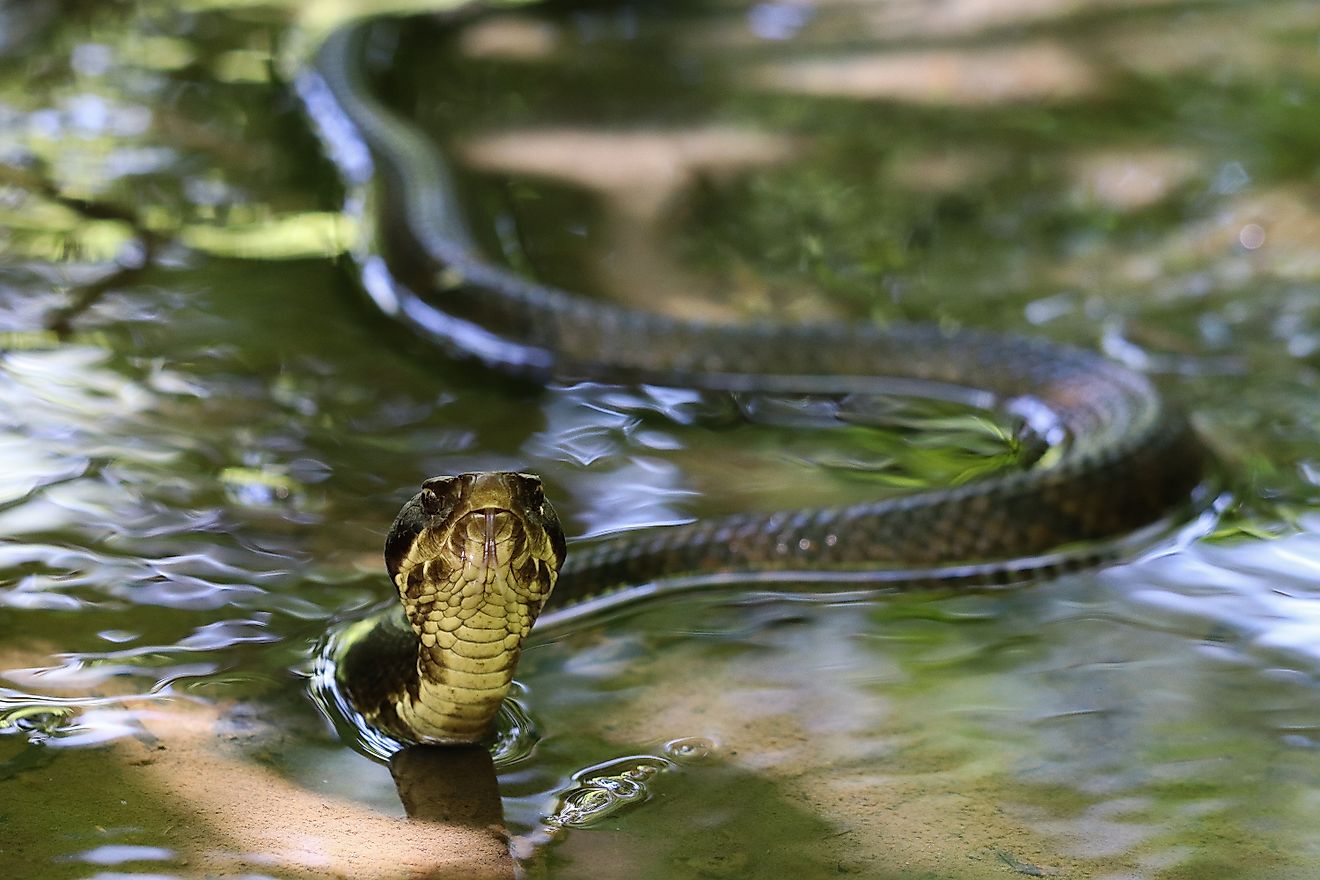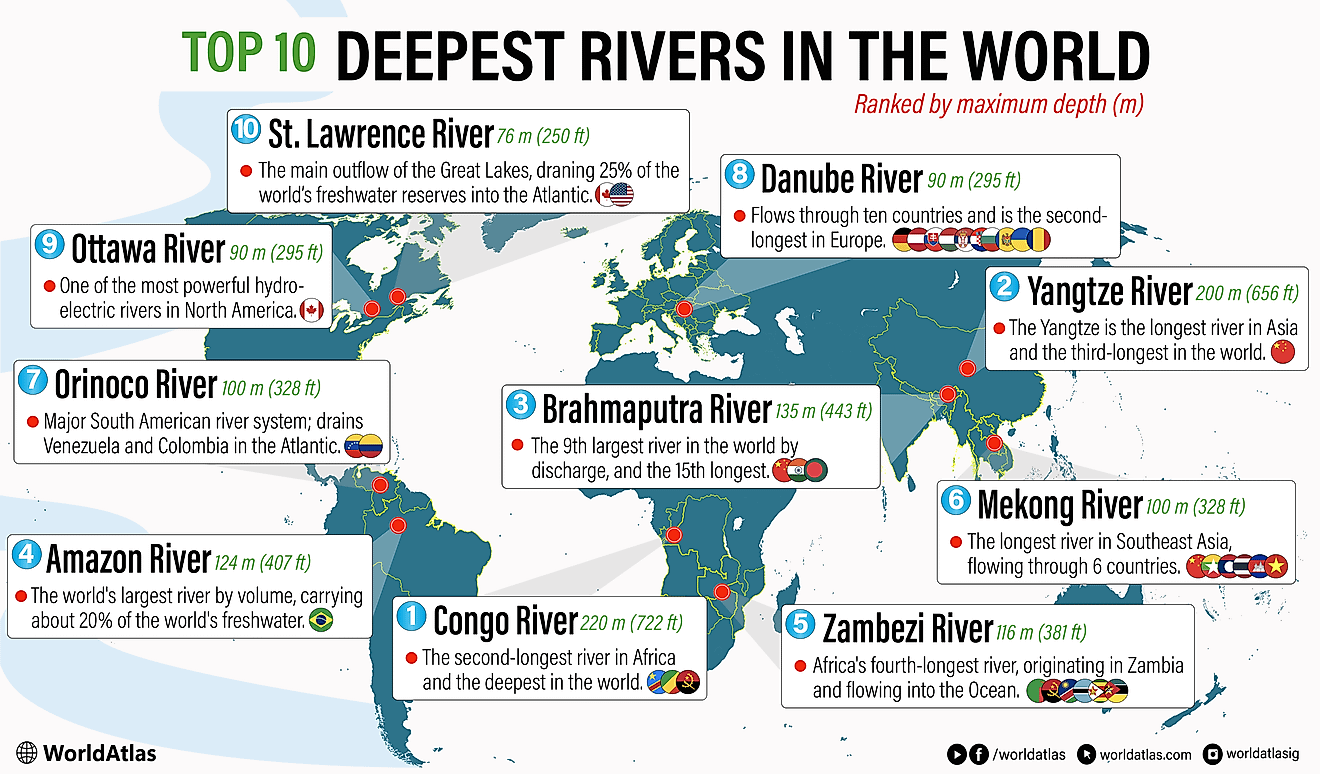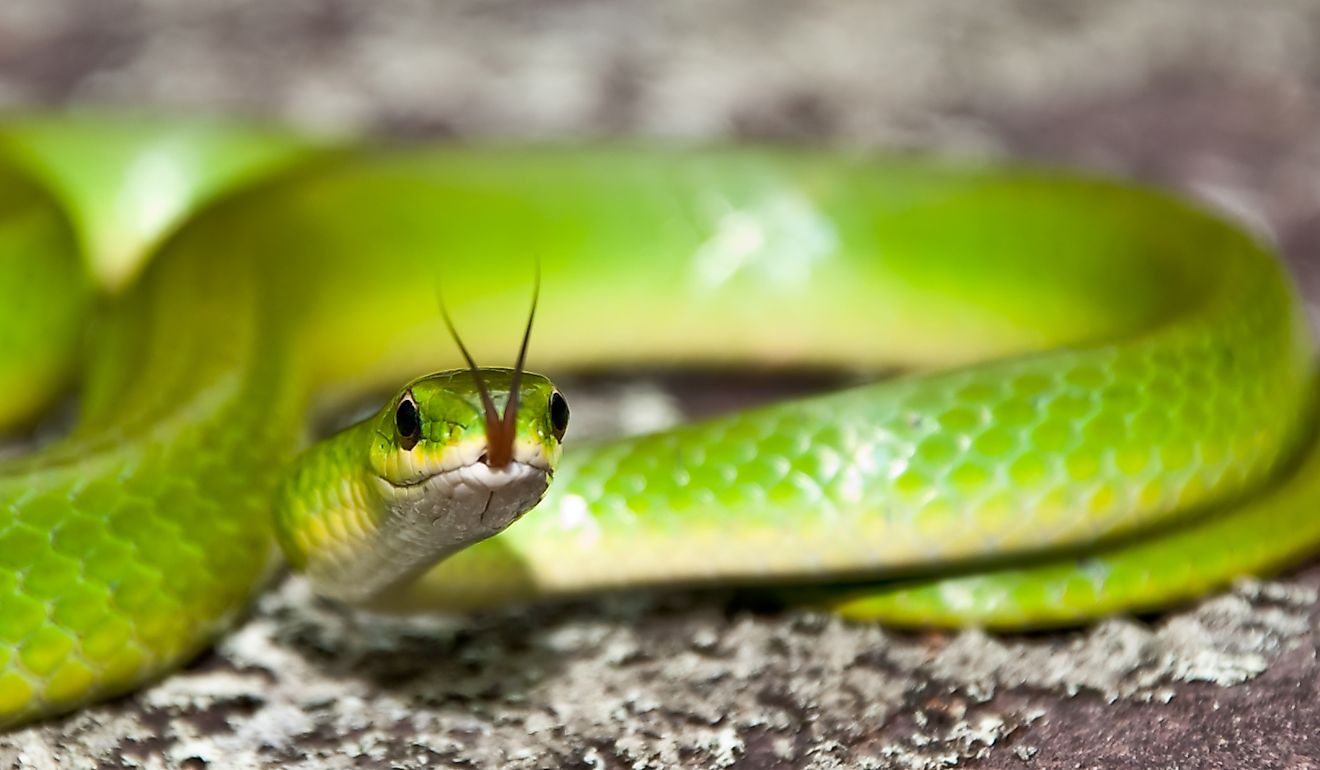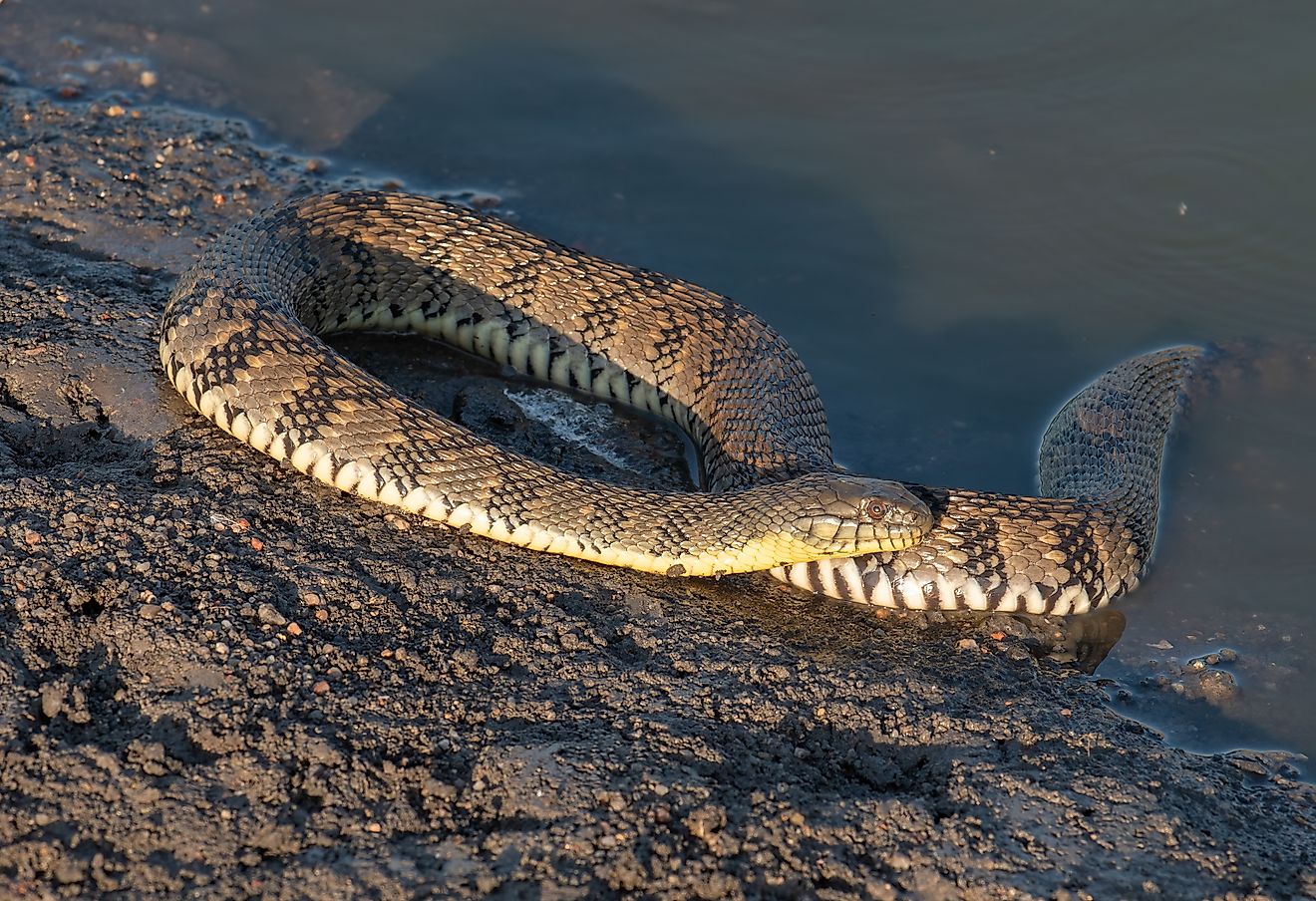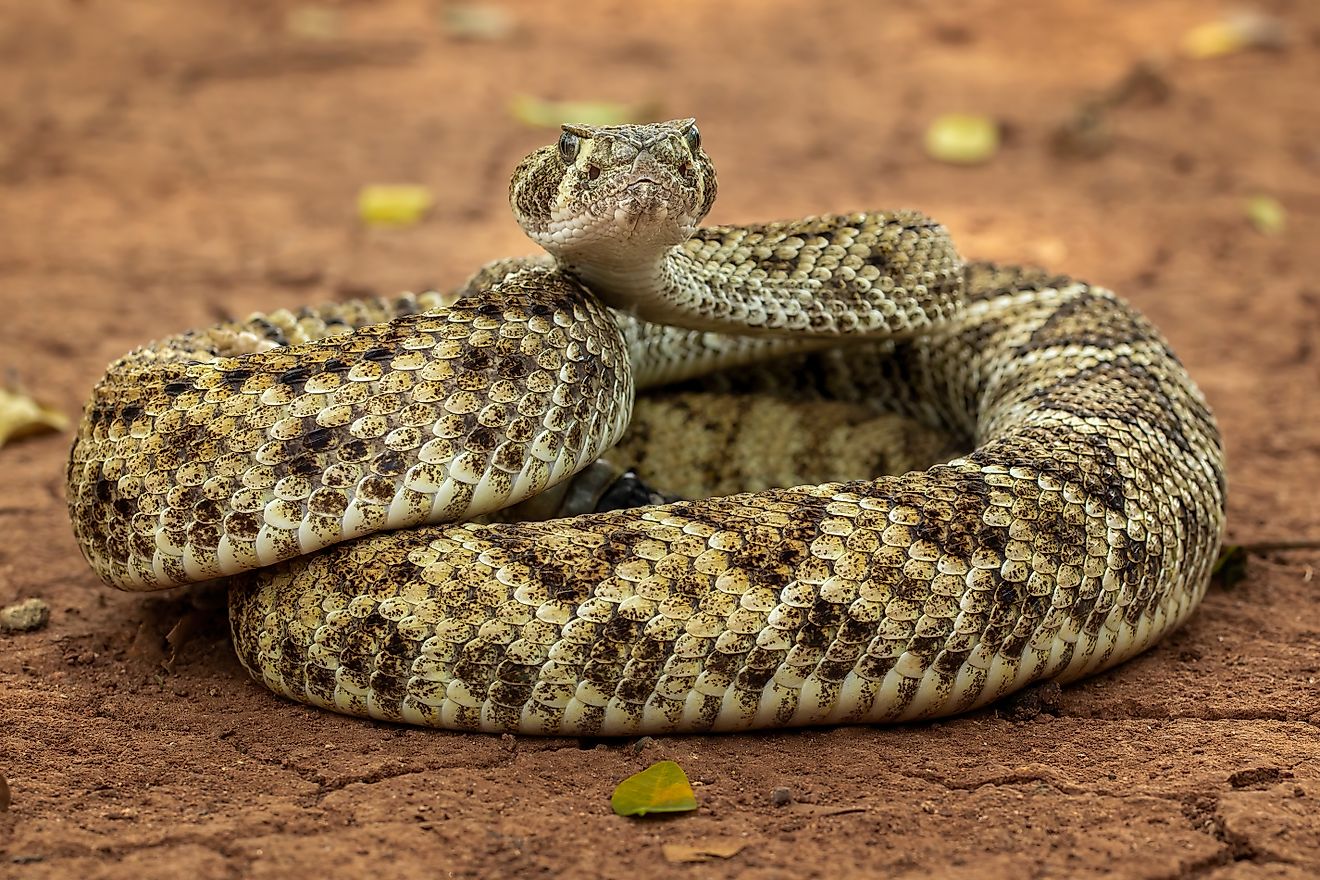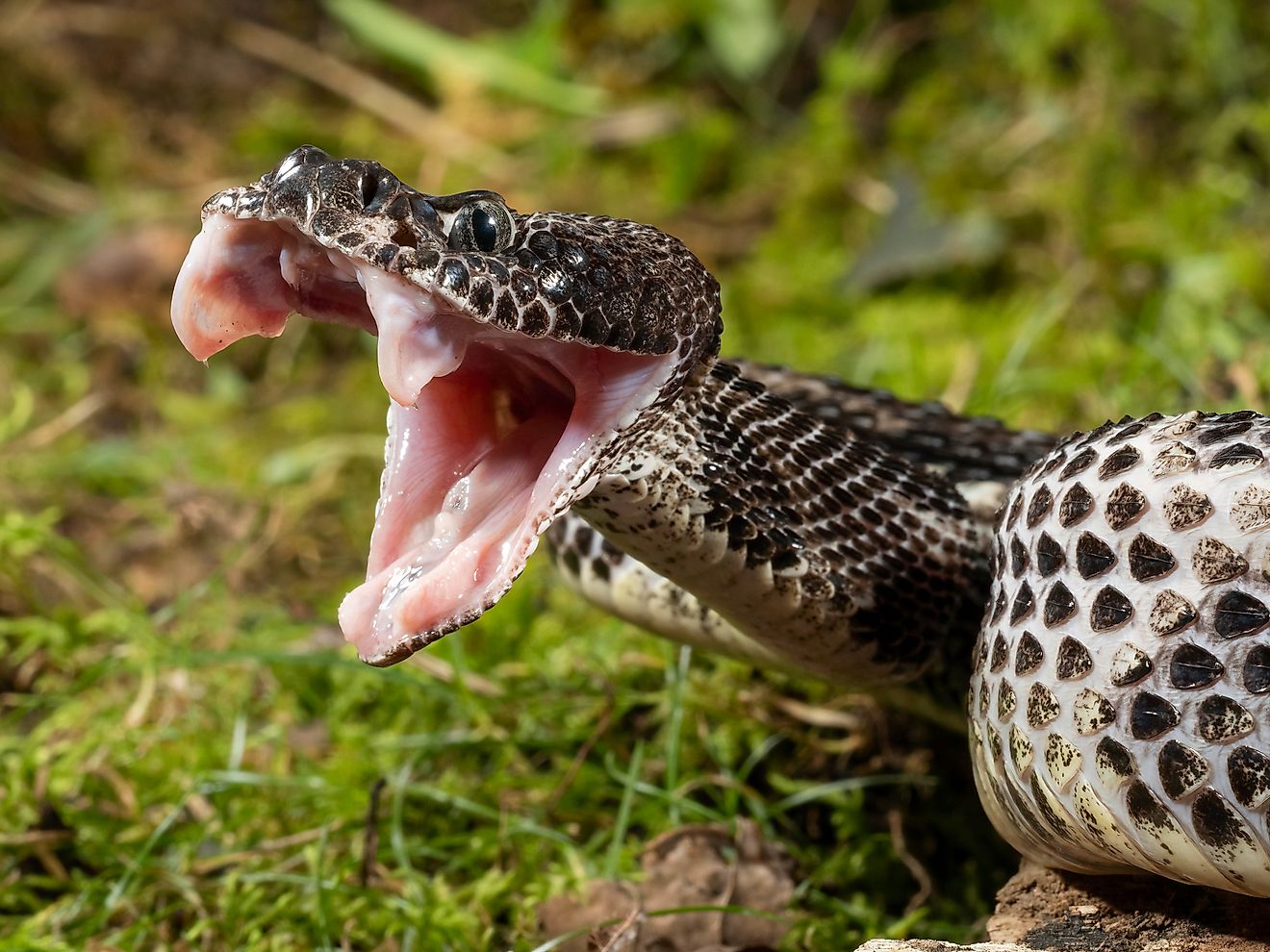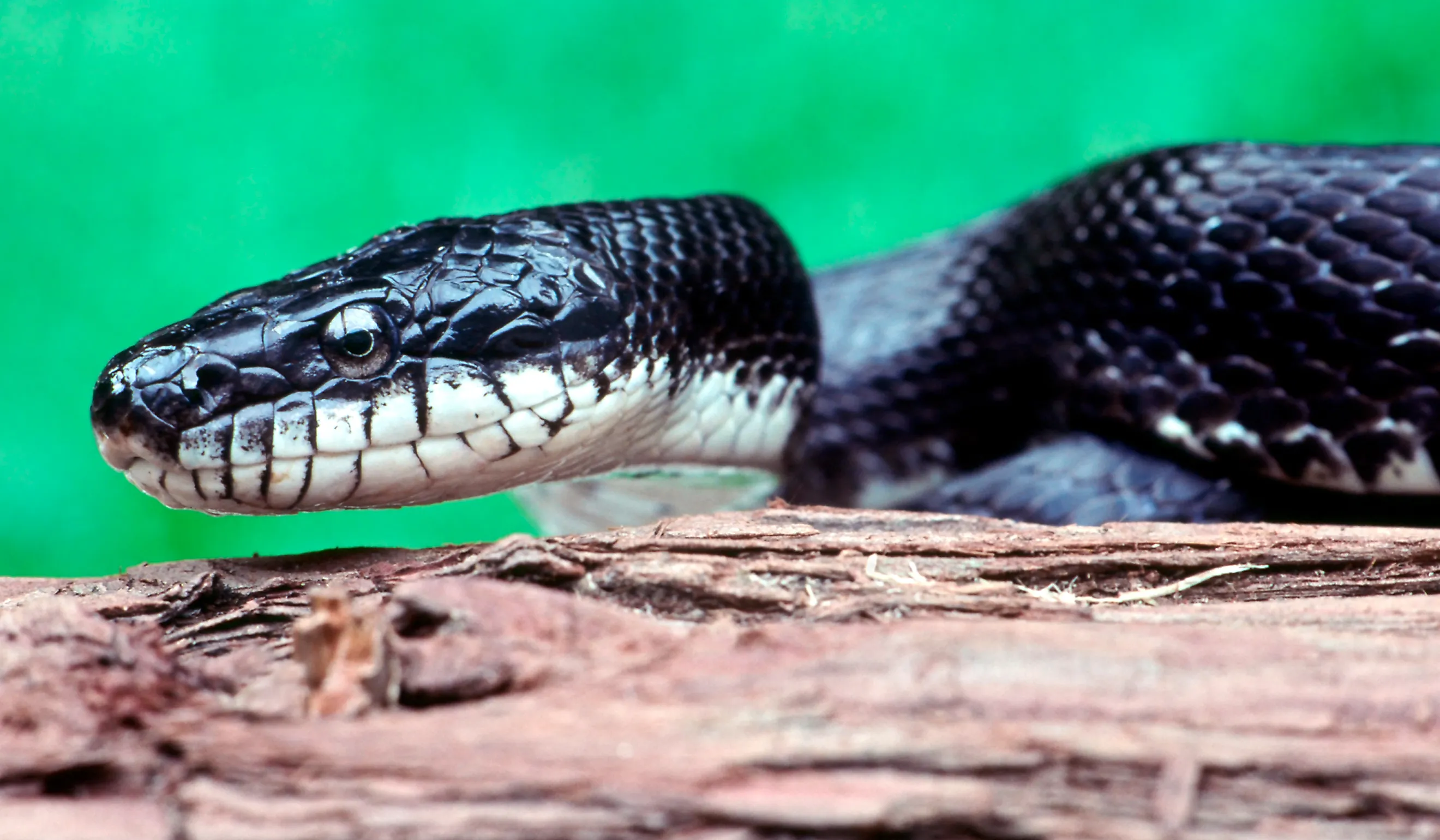
5 Most Snake-Filled Bodies Of Water In Virginia
Along with its rich history, which warrants the nickname “Old Dominion,” Virginia is a scenic state that abounds with natural diversity. From the towering Appalachian Mountains on one side to the Atlantic Ocean on the other, tourists can choose between an array of outdoor landscapes to explore. Among these, the state’s bodies of water stand out, such as Smith Mountain Lake, which has a vast shoreline spanning around 500 miles. While these aspects make them great for activities, they also make lakes and rivers a breeding ground for animals, including snakes.
In total, Virginia is home to around 32 species of snakes. Most of these, like the ring-necked snake and northern water snake, are non-venomous, and a bite won’t be fatal, but some need to be avoided. Species like the timber rattlesnake and northern cottonmouth are among North America’s most venomous and can settle down along bodies of water. A bite from these snakes is more than just a scratch and might need medical attention. This article delves into the most snake-filled bodies of water in Virginia, so you know what to look out for when swimming or boating.
Smith Mountain Lake
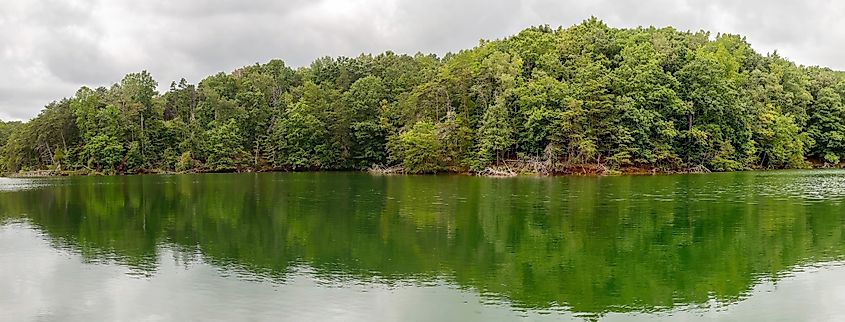
Smith Mountain Lake is a scenic reservoir located near Roanoke in central Virginia. With a surface area of 32 square miles (83 sq km) and a shore length of approximately 500 miles (804 km), it is one of the largest lakes in the area. It is fed by the Roanoke River and is one of the best spots for recreation in the region. People from all over come here for a range of activities such as boating, water skiing, and sailing. Within the water, the lake is full of life, home to fish species such as striped bass, which have bolstered many professional fishing tournaments.
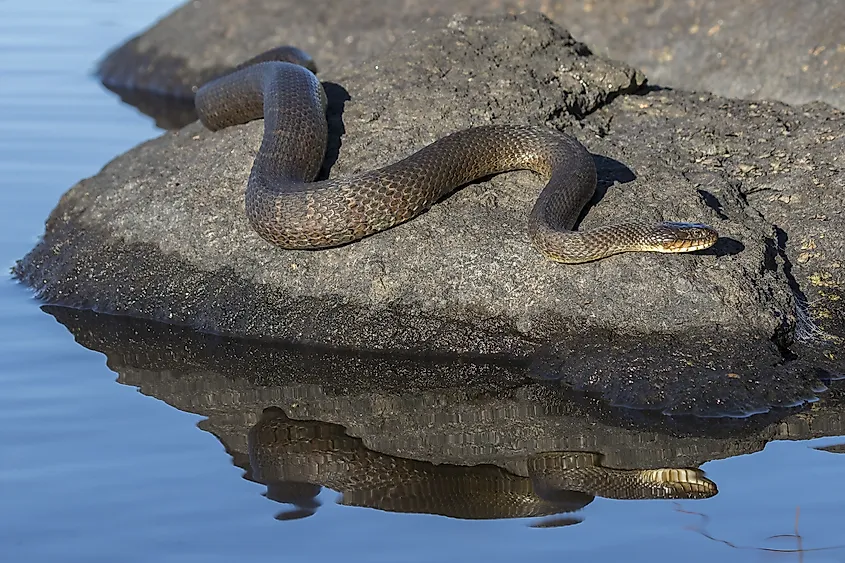
With so much human and animal life, snakes are bound to follow. To this end, Smith Mountain Lake abounds with snakes, and some of the most common species are the northern water snake, eastern hognose snake, and black rat snake. The northern water snake (Nerodia sipedon) is a large species of nonvenomous snake known for its strong swimming ability. They have a dark brown to black coloration with darker crossbands and can reach lengths of up to 53 inches (135 cm). While they may seem scary, they rarely bite, and their bites aren’t harmful to humans. However, apart from these nonvenomous snakes, the copperhead and cottonmouth snakes also live in the Smith Mountain Lake area, so it is important to be alert.
James River
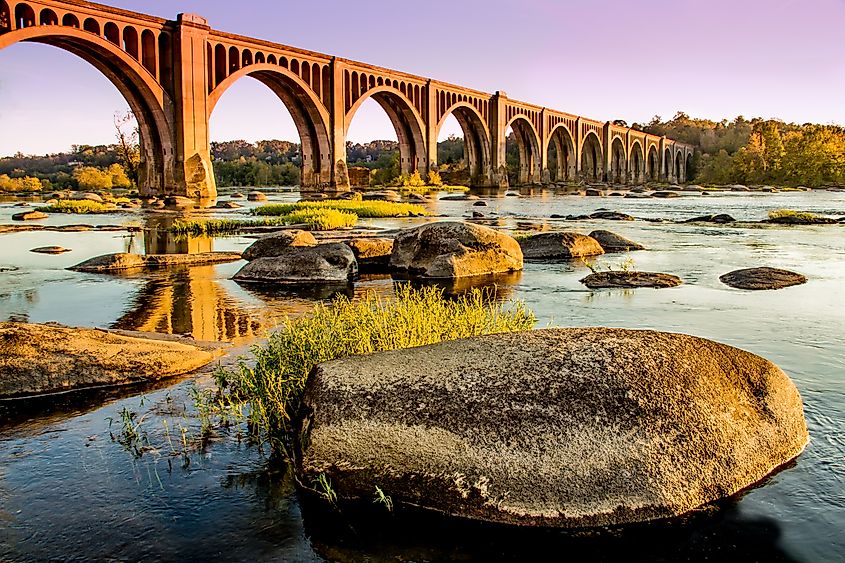
As the longest river in Virginia, the James River is a bundle of wildlife and wilderness. It starts at the Appalachian Mountains, stretching for 350 miles (560 km) through the middle of the state until its mouth at the Chesapeake Bay. Throughout this route, plenty of prominent landmarks lie along the river, such as the historic towns of Jamestown and Williamsburg, as well as outdoor areas like Huntington Park Beach. Thus, the James River is always full of people, and activities like boating, canoeing, fishing, and swimming are commonplace. Moreover, with plenty of mountainous areas nearby, the river’s banks boast a diverse landscape.
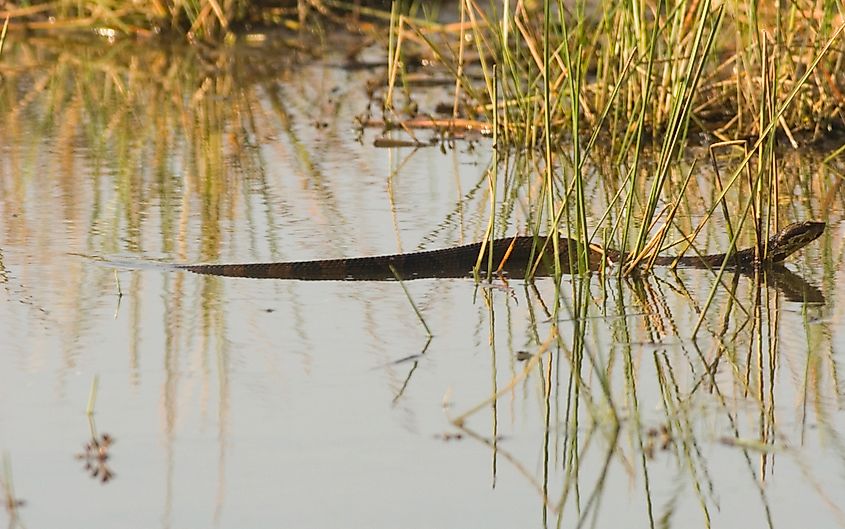
Ode to unique landscapes, many species of snakes are able to thrive along parts of the James River. While most are non-venomous, the cottonmouth (Agkistrodon piscivorus) is one that you should look out for. As the name suggests, this snake has a white cotton-like mouth while the rest of its body is a darker brownish coloration with darker crossbands. The average male reaches around 35 inches (90 cm) in length and has a potent cytotoxic venom. Thus, bites can lead to tissue damage, although they are rarely fatal. Apart from the cottonmouth, various species of water snakes live in the area. As all of these are avid swimmers, be sure to watch for slithering silhouettes when in the water.
Lake Gaston
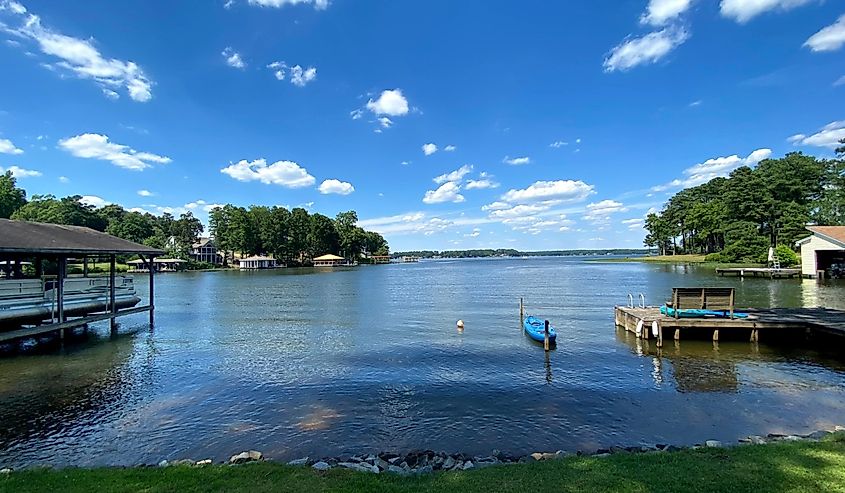
Spread between North Carolina and Virginia, Lake Gaston is a bustling body of water full of life. The lake spans 20,000 acres with a shore length of 350 miles (560 km) and is one of Virginia’s most snake-filled areas. In particular, the black rat snake, northern water snake, and banded water snake thrive in and around Lake Gaston. The black rat snake (Pantherophis obsoletus) is a common name in the region and is native to central North America. It has a dark coloration with black patches and is nicknamed the "black snake.” The average specimen can reach up to six feet (183 cm) and is known to prefer bayous and rocky outcrops. They are also excellent climbers and competent swimmers, making the Lake Gaston area perfect for breeding. Thankfully, most of the known species here are non-venomous, so a bite shouldn’t be fatal.

Apart from the snake population, the lake itself is a hub of life, with all sorts of opportunities. The surrounding area houses over 150,000 permanent residents, so there is always something happening along the water. Over half a dozen marinas make boating and fishing popular pastimes here. Moreover, the Gaston Dam has a total generating capacity of 224 megawatts, providing power to the nearby areas.
Appomattox River
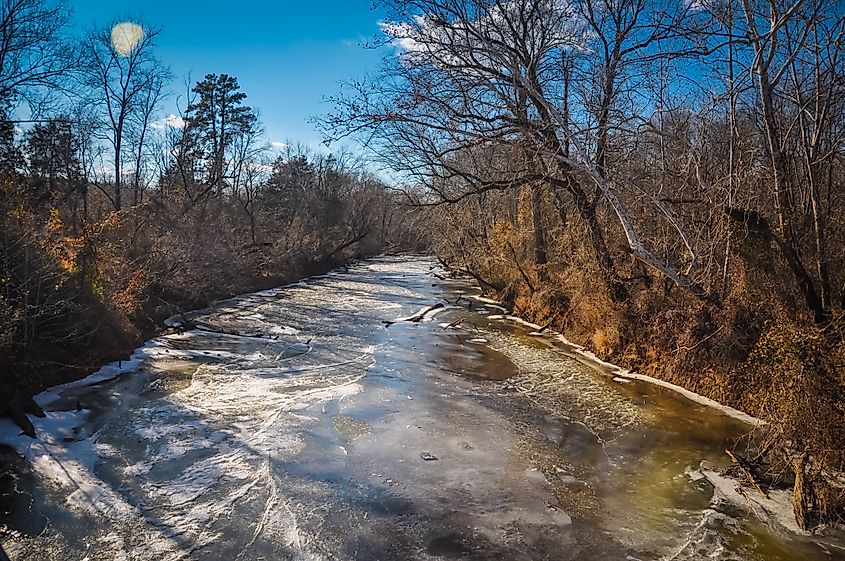
The Appomattox River is a tributary of the James River and stretches for around 157 miles (253 km) in Virginia. Named after the Appomattox Indian tribe, which once lived in the area, it is vital for the cotton and tobacco-growing regions in the state. With various stretches of calm and fast-flowing water, it is a prime location for rafting and canoeing. People can choose between various parts of the river depending on the type of scenery, water speed, and depth. Moreover, plenty of lush wilderness areas like the Appomattox-Buckingham State Forest run along the coast, creating a rich environment perfect for wildlife.
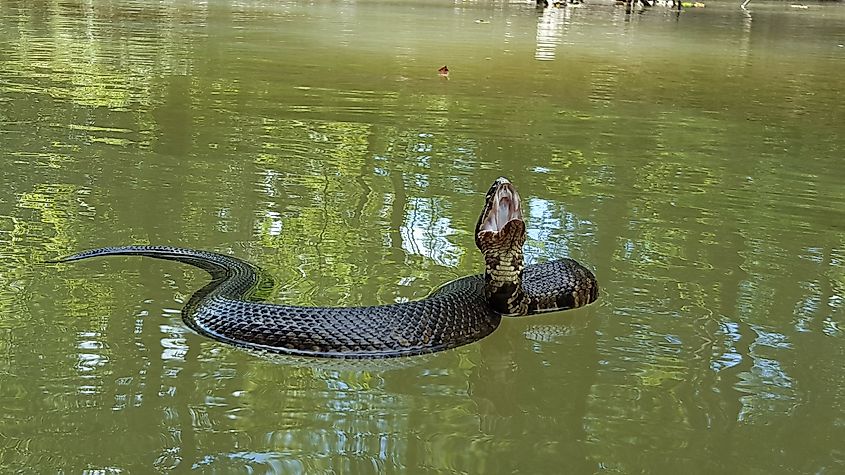
With its diversity, the Appomattox River is also one of the most snake-filled bodies of water in the state. Multiple species of water snakes, such as the brown watersnake, northern watersnake, and plain-bellied watersnake, can often be seen in the waters. While these snakes tend to avoid conflict and are nonvenomous, visitors in the water need to keep an eye out for the cottonmouth. This semi-aquatic pit viper is a dangerous sight, and while it won’t strike without reason, a bite can lead to severe tissue damage if not treated promptly. These snakes are also nicknamed “water moccasins” as they love areas along water, such as marshes, swamps, and the shores of rivers. Thus, it is ideal to get in the water during the daytime and avoid going off trails if you’re hiking nearby.
Potomac River
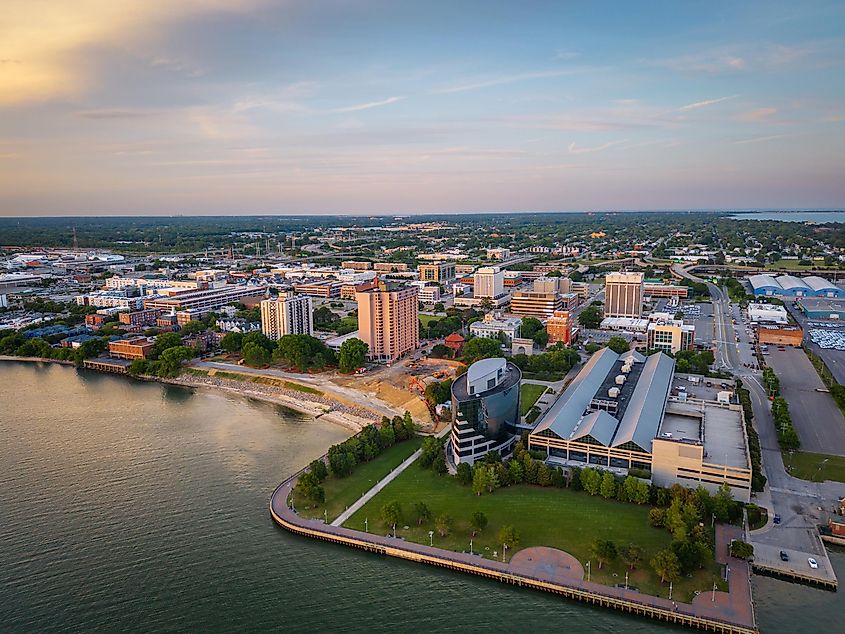
Another one of Virginia’s cascading rivers, the Potomac River stretches through Virginia, West Virginia, Maryland, and the District of Columbia. Running along major cities like Cumberland and Alexandria, it stretches for around 405 miles (652 km) through the United States. The river’s mouth is near Northumberland County in Virginia, and abounds with rich foliage and greenery, palpable at areas like the Crow’s Nest Natural Area Preserve and Widewater State Park. As with most large bodies of water, activities like boating, fishing, and swimming are commonplace, with the North Branch Potomac River being quite popular.
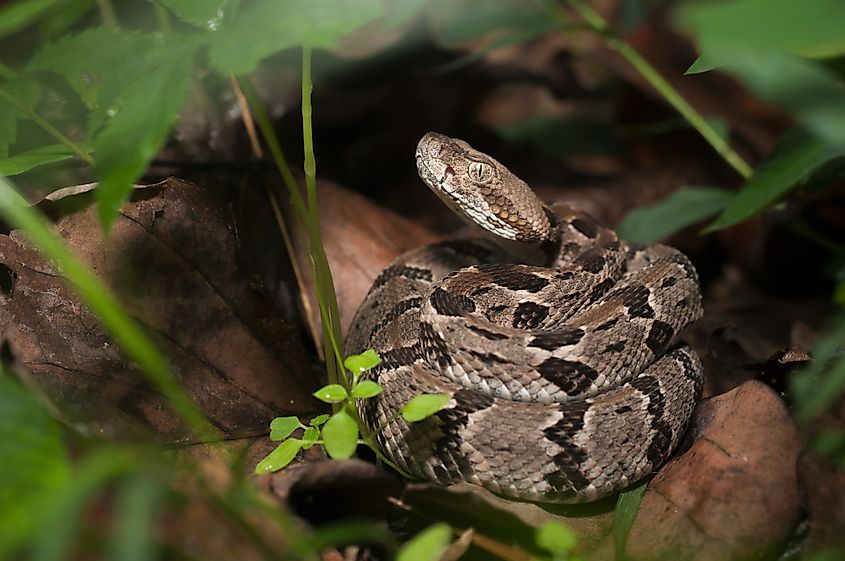
Beyond the activities, the river is a wellspring of animal life, with all sorts of species in and around the water. Bass, walleye, and the occasional bull shark live within the waters, while black bears and bobcats thrive along its shores. However, it is snakes that truly shine, and the Potomac River basin is home to over a dozen species of snakes, from the northern watersnake and ring-necked snake to the timber rattlesnake and northern copperhead. The timber rattlesnake (Crotalus horridus) is among the more dangerous ones, easily recognized by its dark crossbands on a yellowish or grayish body and its distinctive rattle. An adult timber rattlesnake can grow up to five feet (152 cm) long, making it one of the larger venomous snakes you might encounter in Virginia’s wild river regions. Staying on marked paths, avoiding rocky outcrops near the water, and watching where you step are key when enjoying the Potomac’s untamed stretches.
Stay Alert In These Snake-Filled Bodies Of Water
Virginia’s beautiful rivers and lakes draw thousands of visitors yearly for their serene settings and endless activities, but their natural charm comes with a wild side. Whether you’re boating on Lake Gaston, paddling down the James River, or exploring the shores of the Potomac, stay mindful of the local snake populations. Most species are harmless if left alone, yet a few can be serious threats if disturbed. By staying aware and respecting wildlife, you can enjoy Virginia’s waters safely and make memories worth keeping.
